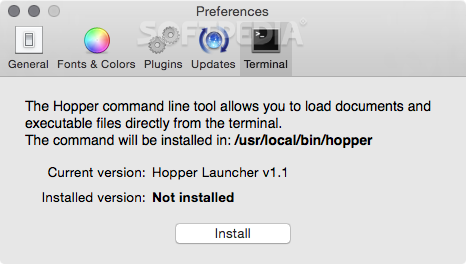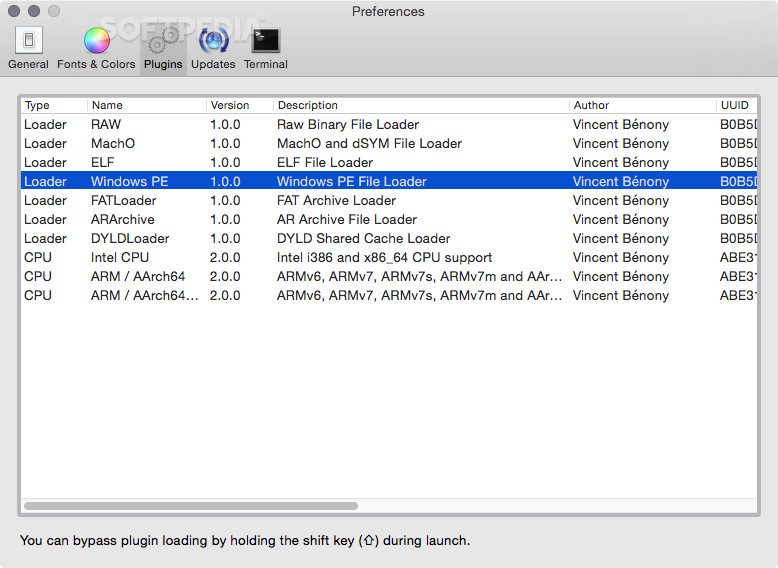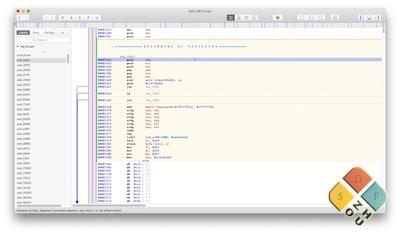

comes standard, and is typically used for general inspection of binaries. The Pentium I ciasdis is available as a binary image, others are in source form, loadable onto lina Forth, available from the same site. A scripting facility aids in analyzing Elf and MSDOS headers and makes this tool extendable.

#Hopper disassembler v4 license code#
It is unique that all disassembled code can be re-assembled to the exact same code. This Forth-based tool allows to incrementally and interactively build knowledge about a code body. See asdis The official name of ciasdis is computer_intelligence_assembler_disassembler.
#Hopper disassembler v4 license mac os x#
Works on DOS, Windows, Linux, Mac OS X and various other systems.udis86 Disassembler Library for x86 and x86-64 Fast and lightweight x86/x86-64 disassembler library. Disassembler The Bastard disassembler is a powerful, scriptable disassembler for Linux and FreeBSD. Capstone Capstone is an open source disassembly framework for multi-arch (including support for x86, x86_64) & multi-platform (including Mac OSX, Linux, *BSD, Android, iOS, Solaris) with advanced features. Republished by the author permission.System Requirements: At the top right of Hopper, click the Pseudocode button, as shown in the image above. This article was originally published at Coding Adventures Blog. I would be still interested to hear some thoughts from somebody working on the Visual C++ compiler team to know the reason behind this " issue". My first conclusion was to keep in mind is to disable 'Whole Program Optimization', if and only if you are calling the 圆4 recursive function directly and passing literals as parameters.Īfter a second analysis it emerged that for a few users this was not happening as they were calling the function directly using variables or indirectly through function pointers. The assemblies produced by both VC++ and Clang are very similar for x86 platforms. ULONG64(*ptr)(ULONG64 n, ULONG64 res, ULONG64 next) = NULL Īlthough I was initially sure that a possible explanation for the absence of tail recursion was the presence of a bug in the Visual C++ compiler it turned out it is not. A Reddit user highlighted that calling the function indirectly through pointers (regardless of using literals) would produce the same result: volatile bool a = true What if we use a variable, or instead a function pointer? Let's try this: ULONG64 a = 40 Īlthough it doesn't look like a big change, calling the fib_tail_圆4 using variables, it enables tail recursion regardless of WPO (as long as an optimization flag >= /O2 is used). Since so far I've used this function call to test my 圆4 fibonacci: ULONG64 res = fib_tail_圆4(40, 0, 1) This has puzzled me for a while until I realized I was not paying attention to one important detail: the way I was calling the fibonacci function from the main. Worked by disabling 'Whole Program Optimization' EDIT 2Ī few users pointed out that regardless of WPO ( Whole Program Optimization) they did not experience any issue with tail recursion.


Return fib_tail_圆4(n - 1, next, res + next) Īs you might recall, compiling it in Release mode (which is generally needed to enable tail recursion due to the compiler optimization command /Ox), and targeting Win32 platforms resulted in having tail recursion disabled: ULONG64 fib_tail_圆4(ULONG64 n, ULONG64 res, ULONG64 next) This was the Fibonacci function used: typedef unsigned long long ULONG64 Let's pick again the Visual Studio project I used in my previous post and hosted on GitHub. Not happy with my conclusions and following several suggestions of users' comments (here on the blog, on Reddit and on Stack Overflow) I wanted to understand more about this issue and to explore other solutions using different compilers. The calculation of Fibonacci sequences of big integers is not an everyday task but it can still be a reliable example to show how tail calls are implemented. My conclusion was that tail recursion is not handled properly by the Visual C++ compiler and a possible explanation could be the presence of a bug. It is the process of transforming certain types of tail calls into jumps instead of function calls. Just as a reminder, Tail Recursion is an optimization performed by the compiler. It turned out that while tail recursion was enabled by the compiler using 32-bit types it didn't really when switching to 64-bit ones. In my previous post I talked about recursion problems in a Fibonacci function using 64-bit variables as function parameters, compiled using the Microsoft Visual C++ compiler.


 0 kommentar(er)
0 kommentar(er)
